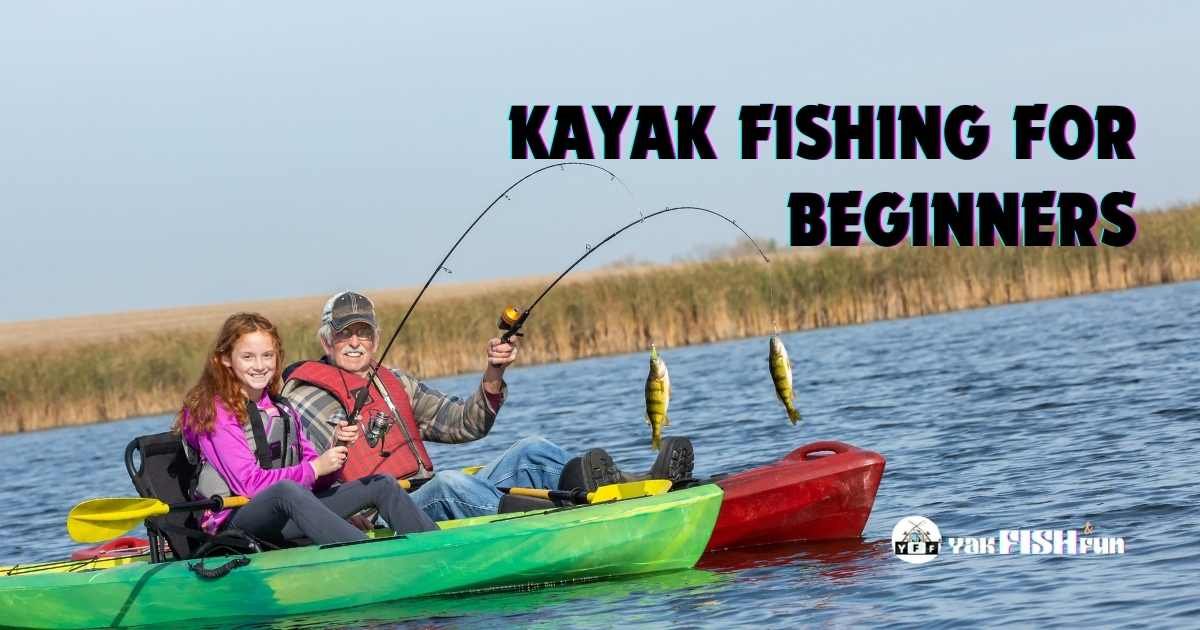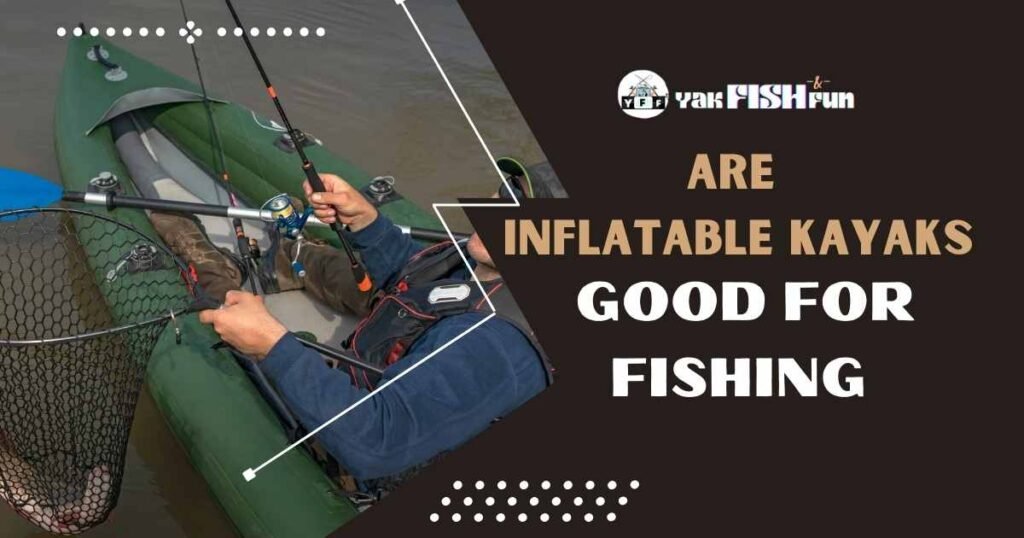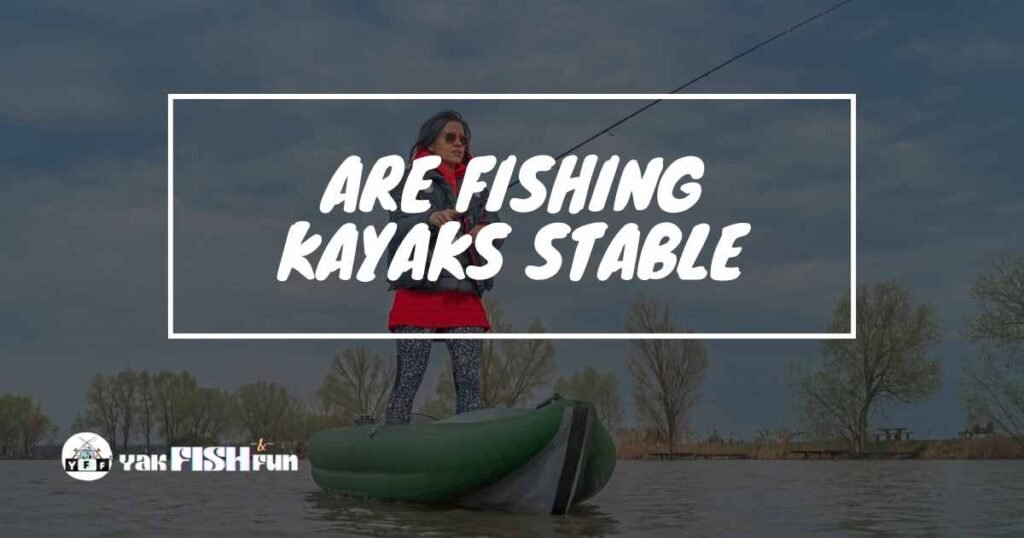Kayak fishing combines the tranquility of paddling with the thrill of angling, offering a unique and immersive way to enjoy the great outdoors. It’s perfect for those who love the water and want to explore different fishing spots.
For beginners, the prospect of kayak fishing can be both exciting and a bit daunting. From choosing the right equipment to understanding basic techniques and safety precautions, there’s a lot to learn.
If you are just starting out – choose a stable, easy-to-maneuver kayak and essential gear like a paddle, life jacket, and fishing tackle.
In this post, we will provide a comprehensive guide to help you get started with kayak fishing. We’ll cover essential topics such as selecting the right kayak and gear, mastering basic paddling and fishing techniques, and tips for staying safe on the water.
Let’s dive in!
Table of Contents

Setting Up A Kayak For Fishing
Beginner kayak anglers can enhance their experience by outfitting their kayak with essential gear like rod holders and tackle storage. Ensure stability and comfort by adjusting the seat and securing all equipment.
Kayak fishing opens up a whole new world of angling adventures. Setting up your kayak correctly is crucial for a successful fishing trip. Here’s how to get started.
Choosing The Right Kayak
Selecting the right kayak is the first step. Different kayaks suit different fishing needs:
- Sit-on-top kayaks: These are stable and easy to get in and out of.
- Sit-inside kayaks: Better for colder waters, offering some protection from the elements.
- Inflatable kayaks: Portable and easy to store, great for those short on space.
Installing Rod Holders
Rod holders keep your fishing rods secure and accessible. Here’s what to consider:
- Flush mount rod holders: Installed into the kayak, providing a sleek look.
- Adjustable rod holders: Allow you to change the rod’s angle and position.
- Clamp-on rod holders: Easy to attach and remove, ideal for beginners.
Adding Storage Options
Proper storage keeps your gear organized and within reach. Let’s look at some effective storage solutions:
- Crate systems: Place in the rear tank well for holding tackle boxes and gear.
- Dry bags: Keep items dry and safe from water splashes.
- Deck bags: Attach to the top of the kayak for easy access to essential items.
Setting Up A Fish Finder
A fish finder helps locate fish and underwater structures. Here’s how to set it up:
- Mount the transducer: Attach it to the kayak’s hull for accurate readings.
- Install the display unit: Place it within easy reach and view.
- Power source: Use a small, waterproof battery to power the device.
Safety Gear And Accessories
Safety should always be a priority. Equip your kayak with essential safety gear:
- Personal flotation device (PFD): Ensure it fits properly and is worn at all times.
- Whistle: Use for signaling in case of an emergency.
- First aid kit: Keep a basic kit on board for minor injuries.
By following these steps, your kayak will be well-equipped for a fun and successful fishing trip.
Choosing The Perfect Location For Fishing
Selecting an ideal spot for kayak fishing involves finding calm waters with abundant fish. Opt for areas with minimal boat traffic to ensure a peaceful experience. Research local fishing reports to identify hotspots for a successful outing.
Kayak fishing offers an exciting blend of adventure and relaxation. One of the most crucial aspects of this activity is choosing the perfect location. The right spot can mean the difference between a fruitful day on the water and a disappointing outing.
Research Local Regulations
Before heading out, make sure to understand the local fishing regulations.
- Licensing requirements: Some areas require a fishing license.
- Seasonal restrictions: Certain locations have fishing seasons.
- Size and catch limits: Know the rules on how many and what size fish you can keep.
- Protected areas: Avoid fishing in designated conservation zones.
Assess Water Conditions
Choosing a location with suitable water conditions is essential.
Calm waters provide a safer and more enjoyable experience for beginners. Look for lakes, ponds, or slow-moving rivers. Avoid areas with strong currents or heavy boat traffic, as these can be challenging to navigate.
Consider Fish Species
Different locations offer various fish species.
- Freshwater spots: Ideal for catching bass, trout, or catfish.
- Saltwater locations: Great for targeting redfish, snook, or flounder.
- Mixed environments: Some places provide both freshwater and saltwater fish.
Accessibility
Accessibility is a key factor in selecting your fishing spot.
Look for locations with easy entry points for kayaks. These may include boat ramps, docks, or gentle shorelines. Ensure there’s ample parking and that the spot is not too remote, especially if you’re new to the sport.
Safety And Amenities
Safety and available amenities can make your trip more enjoyable.
- Nearby facilities: Restrooms and picnic areas can be very convenient.
- Emergency services: Ensure you are within a reasonable distance from help if needed.
- Mobile signal: Check if the area has good cell phone reception for emergencies.
Choosing the right location involves considering regulations, water conditions, fish species, accessibility, and safety. With these tips, you’re well on your way to a successful kayak fishing adventure.
Bait Selection For Kayak Fishing
Selecting the right bait is crucial for kayak fishing success. Beginners should opt for live bait like worms or minnows. Artificial lures also work well in attracting a variety of fish species.
Kayak fishing opens up a world of adventure. It’s crucial to get the bait right, especially if you’re a beginner. Let’s dive into the essentials of , ensuring your experience is both fun and fruitful.
Understanding Your Target Species
Before choosing bait, understand the fish species you aim to catch. Each fish has different preferences.
- Bass: Often go for worms and minnows.
- Trout: Prefer insects, such as mayflies and crickets.
- Catfish: Attracted to smelly baits like chicken liver.
Live Bait Vs. Artificial Lures
Each type of bait has its pros and cons. Here’s a quick comparison to help you decide:
- Live Bait: Feels natural, and attracts more fish.
- Artificial Lures: Reusable, less messy.
Best Live Bait Options
Live bait can be incredibly effective. Here are some top choices:
- Worms: Easy to find and versatile.
- Minnows: Great for predatory fish.
- Crickets: Ideal for freshwater fishing.
Top Artificial Lures
Artificial lures come in various shapes and sizes. Let’s explore some popular types:
- Crankbaits: Mimic small fish, great for bass.
- Spinnerbaits: Flashy and attract fish with movement.
- Soft Plastics: Flexible, good for mimicking worms and insects.
Matching Bait To Water Conditions
Selecting the right bait also depends on water conditions. Here’s a brief guide:
- Clear Water: Use natural-colored baits.
- Murky Water: Brightly colored baits stand out.
- Cold Water: Slow-moving baits are more effective.
Seasonal Bait Selection
Fish behavior changes with the seasons. Adjust your bait accordingly:
- Spring: Fish are active; use fast-moving baits.
- Summer: Fish go deeper; use sinking baits.
- Fall: Fish feed aggressively; larger baits work well.
- Winter: Slow-moving, smaller baits are ideal.
Scented Vs. Unscented Baits
Choosing between scented and unscented baits can influence your catch rate. Here are some considerations:
- Scented Baits: Attract fish from a distance.
- Unscented Baits: Rely on appearance and movement.
Matching Bait To Fishing Technique
Each fishing technique pairs well with specific baits. Here’s a quick rundown:
- Casting: Works well with crankbaits.
- Trolling: Effective with spinnerbaits.
- Drifting: Best with live bait like minnows.
Bait Storage Tips
Proper bait storage ensures your bait stays fresh and effective. Here are some tips:
- Live Bait: Keep in a cool, aerated container.
- Artificial Lures: Store in a tackle box, away from sunlight.
Experimenting With Bait
Don’t be afraid to try different baits. Fish can be unpredictable, and experimentation can lead to great results.
Essential Accessories For A Successful Kayak Fishing Trip
A successful kayak fishing trip for beginners requires essential accessories like a sturdy paddle, a comfortable life vest, and a reliable fishing rod holder. Don’t forget a waterproof storage box for your gear and a fish finder to locate your catch.
Kayak fishing combines the thrill of kayaking with the excitement of fishing. It offers an intimate experience with nature. To make your trip successful, you’ll need the right accessories.
Let’s explore the essentials to enhance your adventure.
Paddle Leash
A paddle leash ensures you don’t lose your paddle. It keeps it secure even if you accidentally drop it.
- Attachment to kayak: Connects your paddle to the kayak.
- Prevents loss: Ensures your paddle stays with you.
- Flexible length: Adjusts to your paddling style.
Fishing Rod Holders
Fishing rod holders keep your rods secure and easily accessible. They free up your hands for paddling and other tasks.
Tackle Box
A tackle box organizes your fishing gear. It makes it easy to find the right lure or tool when needed.
- Multiple compartments: Keeps gear sorted.
- Waterproof design: Protects gear from water.
- Portable size: Fits easily in the kayak.
Personal Flotation Device (PFD)
A personal flotation device is crucial for safety. It keeps you buoyant if you fall into the water.
Anchor System
An anchor system keeps your kayak in place. It’s essential when fishing in currents or windy conditions.
- Secure positioning: Prevents drifting.
- Easy deployment: Simple to use.
- Compact storage: Fits in small spaces.
Dry Bags
Dry bags protect your belongings from water. They keep your gear dry and safe.
Fish Finder
A fish finder helps locate fish. It uses sonar technology to show underwater structures and fish locations.
- Sonar technology: Provides accurate readings.
- Easy to mount: Attaches to the kayak.
- Clear display: Shows detailed information.
First Aid Kit
A first aid kit is vital for handling minor injuries. It ensures you’re prepared for any mishap.
Kayak Seat Cushion
A kayak seat cushion offers comfort during long trips. It reduces fatigue and provides support.
- Added comfort: Enhances seating experience.
- Ergonomic design: Supports your back.
- Durable material: Long-lasting and water-resistant.
Gps Device
A GPS device helps you navigate unfamiliar waters. It ensures you stay on course and find your way back.
Picking The Right Type Of Kayak – Matters Most
Selecting the right kayak is crucial for beginners in kayak fishing. Decide between sit-on-top and sit-inside, and consider paddle vs. pedal for optimal comfort and control.
Kayak fishing offers an exhilarating way to connect with nature while enjoying a peaceful day on the water. Choosing the right kayak is crucial for a successful experience. Let’s dive into the details to help you make the best choice.
Sit On Top Kayaks
Sit-on-top kayaks are popular among beginners. They offer several advantages:
- Stability: Ideal for fishing, they provide a stable platform.
- Easy Entry: Getting in and out is a breeze, perfect for newcomers.
- Self-Draining: Water drains through scupper holes, keeping you dry.
Related: Why Are Fishing Kayaks Sit On Top?
Sit Inside Kayaks
Sit-inside kayaks also have their unique benefits. Here’s what you need to know:
- Protection: Offers more protection from the elements, great for colder weather.
- Lower Center of Gravity: Ensures better control and efficiency.
- Storage: Provides more internal storage space for gear.
Paddle Kayaks
Paddle kayaks are traditional and widely used. Consider these points:
- Simplicity: Easy to use and maintain, ideal for beginners.
- Cost-Effective: Generally more affordable than pedal kayaks.
- Exercise: Provides a good workout, keeping you fit while fishing.
Pedal Kayaks
Choosing the right kayak can make all the difference in your fishing adventures. Pedal kayaks bring a modern twist to fishing. They offer several advantages:
- Hands-Free Operation: Allows you to fish while moving.
- Speed: Can cover larger areas faster than paddling.
- Less Fatigue: Uses leg muscles, reducing arm strain.
Is Fishing From A Kayak Difficult?
Fishing from a kayak can be challenging initially. With practice, it becomes easier. Stability and balance are key factors. Use proper gear and techniques for a smoother experience. Many find it enjoyable and rewarding once accustomed.
Do Fishing Kayaks Flip Easily?
Fishing kayaks are generally stable and do not flip easily. Modern designs prioritize stability, making them safe for anglers.
Bottom Line
Choosing the right kayak for river paddling is key to a safe and fun adventure. Whether you’re on calm streams or rough rapids, the right kayak can make a big difference. Sit-on-top kayaks are stable and easy to use for beginners, while sit-inside kayaks offer better control for advanced paddlers. Inflatable kayaks are portable and convenient, great for those with limited storage or who travel often. Think about your skill level, the type of rivers you’ll paddle, and your specific needs to find the perfect kayak. Get ready to enjoy the excitement and beauty of river paddling with the right kayak!


